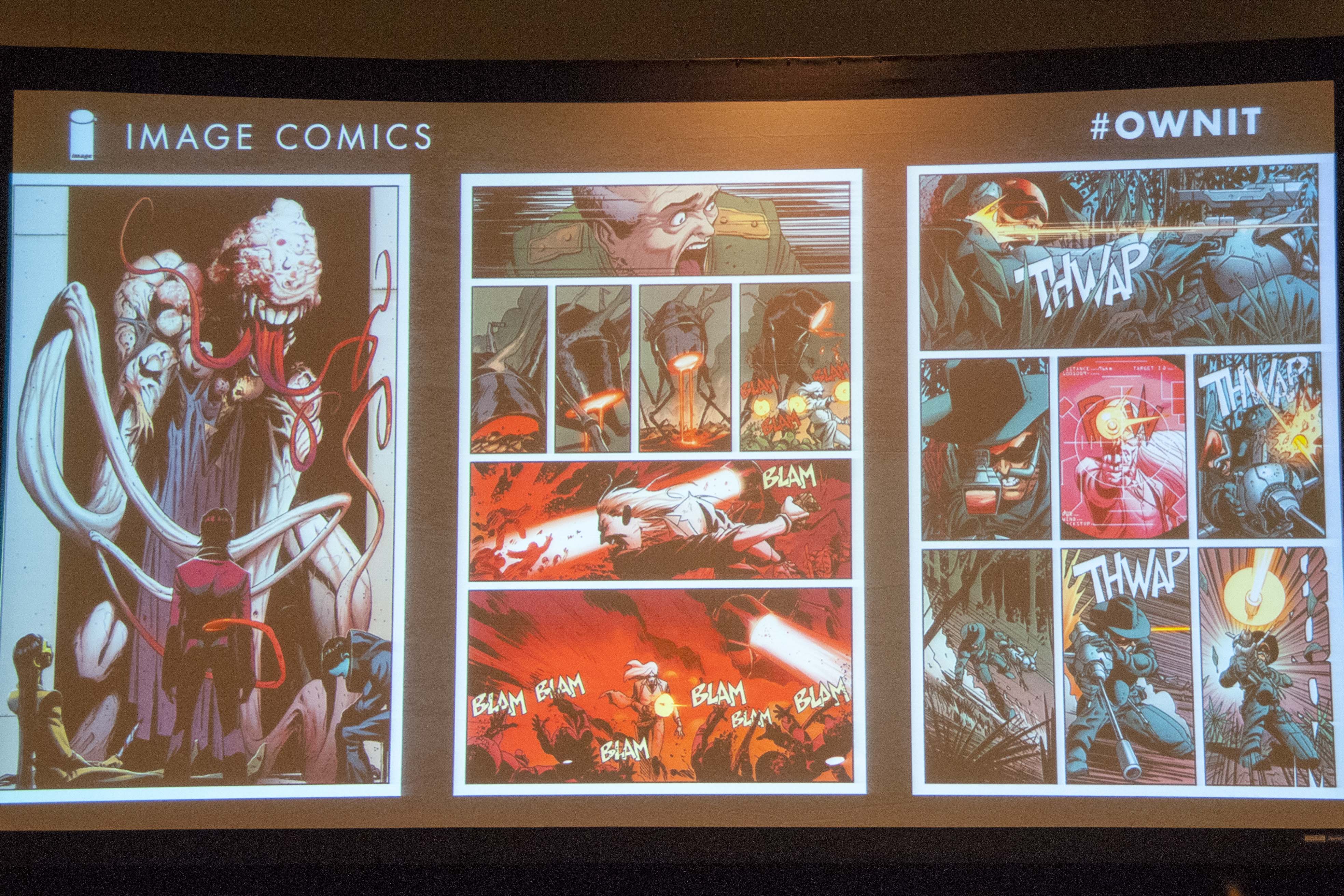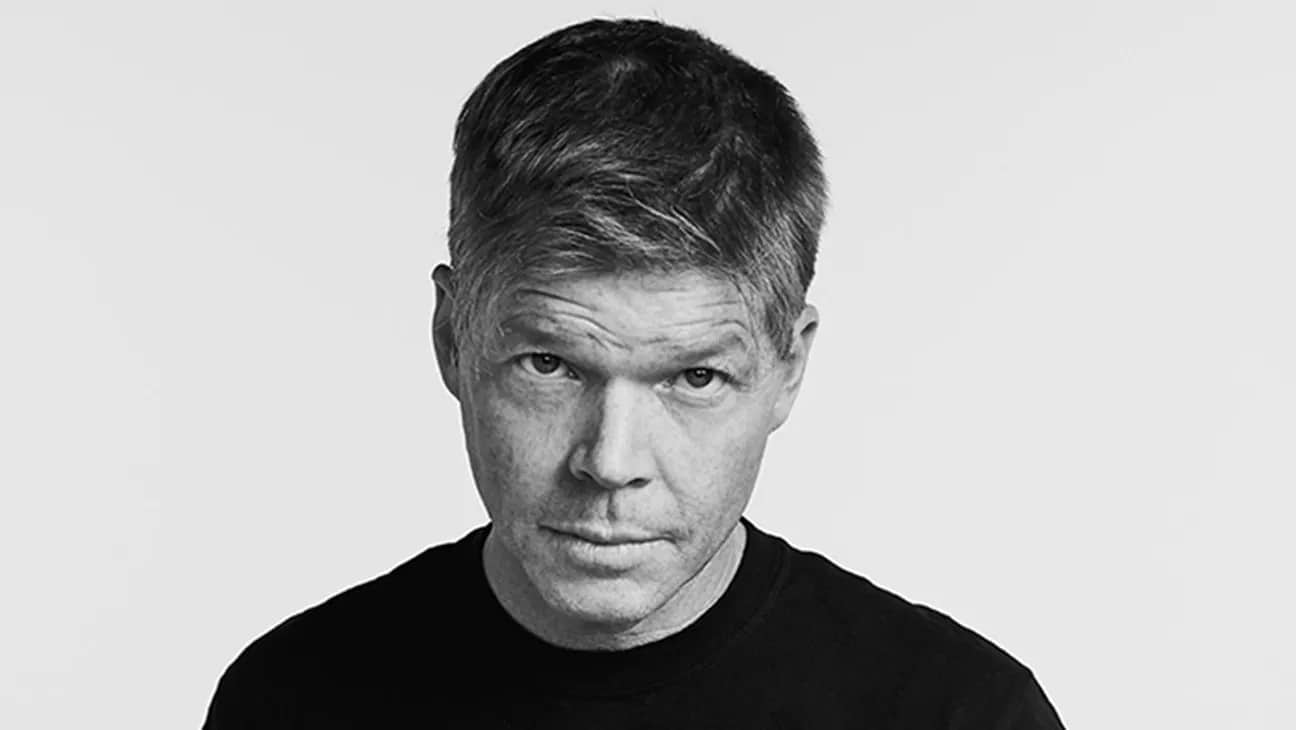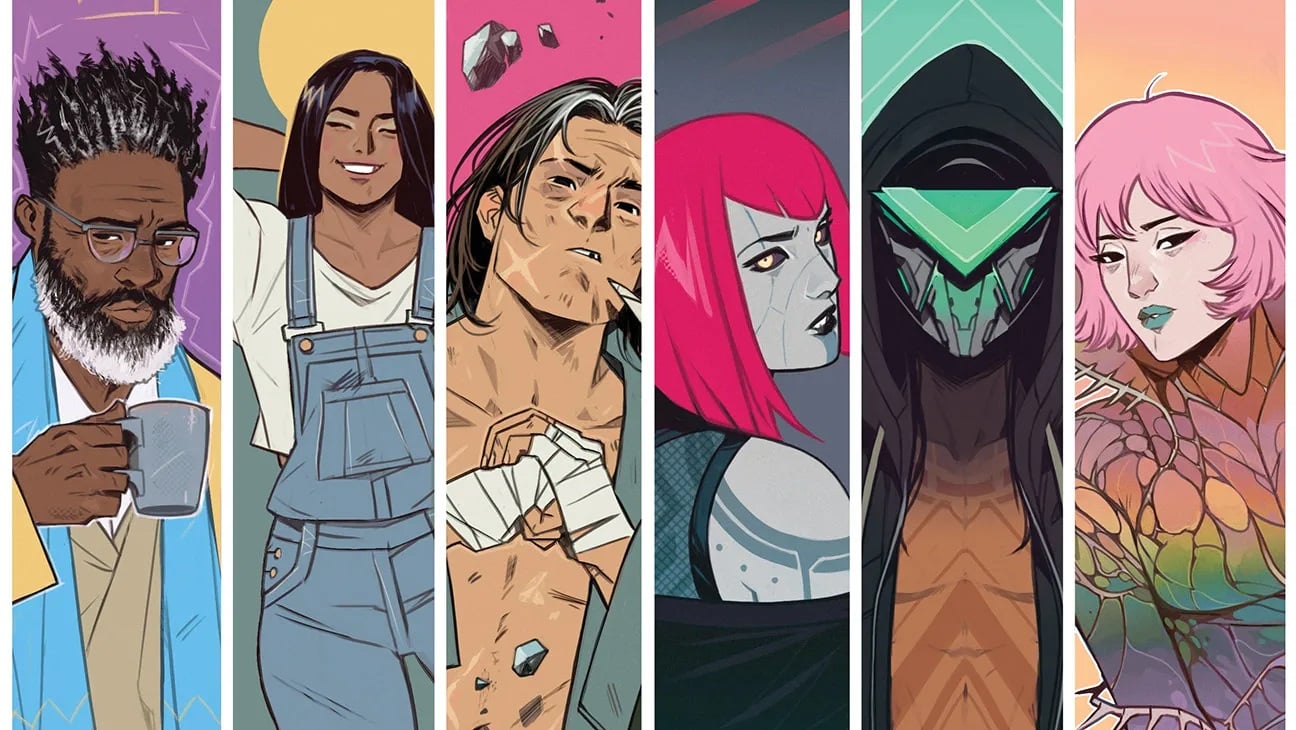By Nick Eskey
On July 9th at San Diego Comic-Con, the creators of comics “Eat of West” (Jonathan Hickman and Nick Dragotta) and “Invisible Republic” (Gabriel Hardman and Corrina Bechko) gathered on behalf of Image Comics. These comic writers and artists were present to discuss the processes that they use to create their perspective works.
First the prompter asked the panel to talk about the comics themselves. “Eat of West is a Sci-fi Western,” said Jonathan Hickman. “The four horsemen come to bring about the apocalypse. But one of them falls in love; death of course. And he doesn’t feel like fulfilling his duty.” Gabriel Hardman said that “Invisible Republic is about a disgraced reporter that finds a hidden history of a foreign planet.”
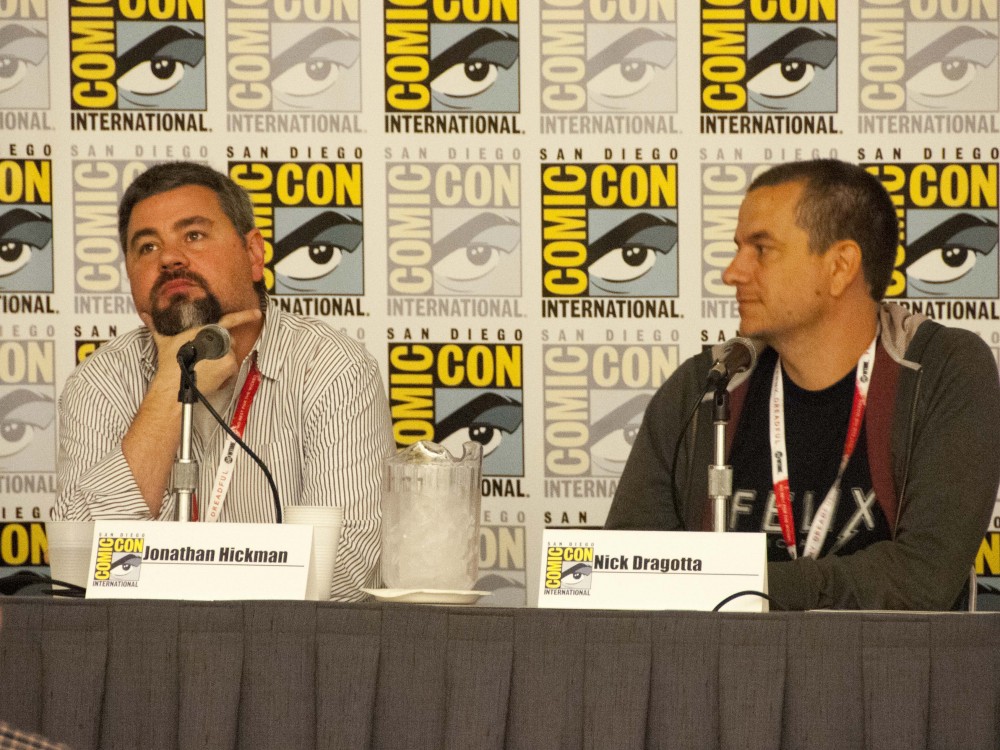
For any story, the first thing that has to get cleared is its development. “We had an idea for a world going through a rebellion,” said Gabriel. “We were thinking of this song from the 70’s that talked about rebellion in the future.” For East of West, Nick and Jonathan talk about how they went to lunch together. “Nick wanted a Western, and I wanted a Sci-fi,” said Jonathan Hickman. “When we couldn’t argue over which one, we just decided to do both.”
With the idea of the story decided, the teams would need to be able to work well together. With any collaboration between artist and writer, they would each need to learn the other’s habits. “Well, we’re married,” said Gabriel. “We live in the same house. Our working habits have a sort of ‘Jazz’ interplay. If something doesn’t work, we talk to each other and change it… It’s very organic. And if we want to change something, it’s not like we have to go to anyone and get the changed approved.” For East of West, artist Nick said “I just wanted to make the work easy between us.” Gabriel from Invisible Republic laughed as this, then adding “It’s never easy for us.”
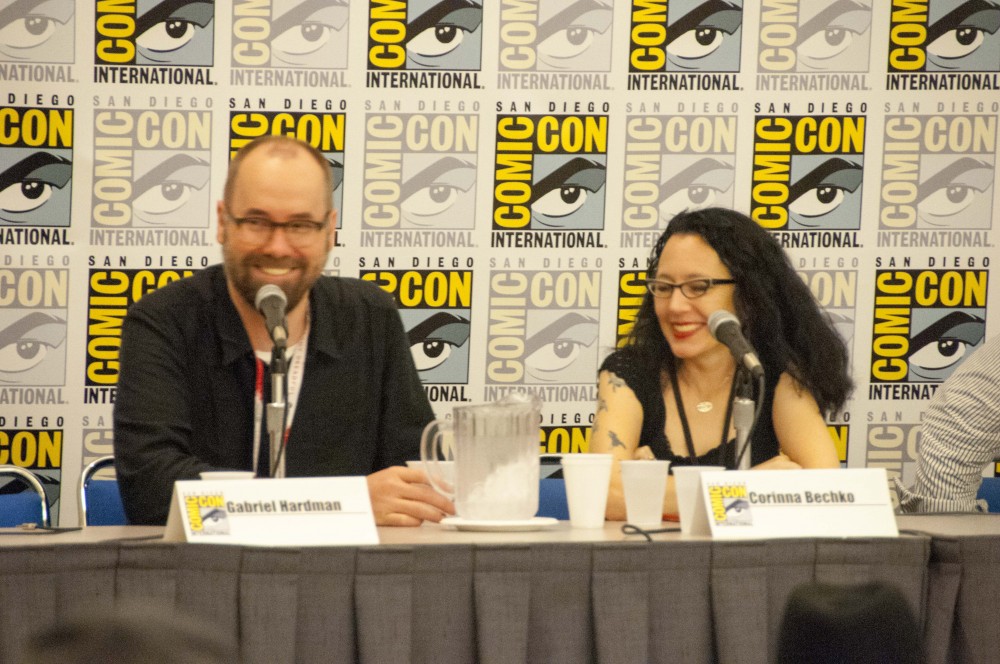
What sets apart a graphic novel and a comic from a book is the artwork; it tells the story just as much as the dialogue. Nick Dragotta spoke about his own drawing style. “I like to use thumbnails as panels… to let them lead the reader’s eye. This is easier for me because I work in digital, and use layers.” Writer Jonathan Hickman added that because his time is limited, he has to look at his work as a whole. “I’ll give Nick what idea I have for dialogue, sometimes even the whole thing, knowing there’s a chance I’ll have to rewrite it all… I just try to get the hell out of the way, and let the artist have his way.”
After showing the completed art, Nick said that sometimes Jonathan will say a section “would do better with this addition of dialogue.” This would make Nick either add a page or two, or even go back and redo some of them. “An angle change might have happened,” he further adds.
Gabriel Harman says that he’s in large a story board artist, working on some movies just as “Tropic Thunder” and “Inception.” He prefers to use more traditional means, using paper and pencils to draw out the scenes, defining parts here and there but not fully. “And I’ll ink it as I go,” he said. “I don’t do full penciling first, or I’ll find that I have this dead thing.”
Soon the topic of rules came up: whether there are rules for their work. “One thing I believe in is arbitrary rules,” said Gabriel. “Things go left and right, and important things to the front. [Also] never use caption to tell where the story is going… For us it’s about drama than literature. These things are how you tell the story.”
This led to a discussion of how the teams decide to convey their story. Some comic writers and artists use captions to partially tell it, and some use over dramatic scenes. “We try to tell emotion with less,” said Gabriel. “Struggle and intensity with how the characters hold themselves. I want them to be like pixies; I want them to be quiet, and I want them to be loud when loud… I don’t want it like ‘Jack Kirby,’ where everything is flying out at you.”
“If you’re a writer, it’s like a huge cheat to just tell someone what’s going on,” said Jonathan of East of West. “It’s like if they said ‘I ran as fast as I could,’ and then they run. There’s nothing worse than telling something twice.” Nick added that, “I first drive for clarity; simplify. And then I draw the heck out of it.”
After the art is pretty much done, coloring comes in. Color palettes can be very important as well when it comes to making the comic tie together well. Gabriel of Invisible Republic mentioned that since their comic has two time streams, they use two different palettes. “The present is a desaturated film look, when film use to be used for movies.” Nick took it further by talking about the role of colorists. “[They are] like the new finishers… we give the colorist enough space to play and have it. Color sells books, really. If you are in perfect harmony with your colorist, you have it made.”
As a last discussion, the teams discussed their influences; where their ideas come from. “Manga, because they show, not tell,” said Nick Dragotta. Jonathan Hickman had a lot more to say on the subject. “I consumed as much as I could when I was beginning, and my first five projects could be seen as ‘this is like that, but meets this.’ I don’t read as much anymore though… when I work it could spark an idea that I’ll want to include, or spark another idea that I don’t’ have time for… Nowadays I watch a lot of film.”
Gabriel Hardman said that “I take influences from other outside sources. Pull from everything, not just comics.” This is where Jonathan broke back in, and went on a rampage about comic ideas. “I also work for marvel as a writer, and they write comics for comics. They don’t take any original ideas, just basically mine their previous franchises. It’s incestuous. No, they’ve [expletive] themselves beyond incestuous.” He then discussed how “cool” it is when people are willing to try new original things. “It’s really cool.”
It’s great to see the process from where the story and art of our comics come to life. Because after all, that’s what makes comics, well, comics. And it’s great to have a company like Image that gives their writers and artists the space to let such creativity flow. Keep an eye out for “East of West” and “Invisible Republic.”


